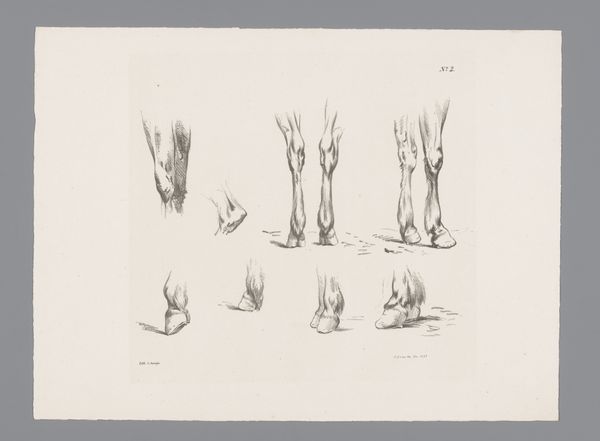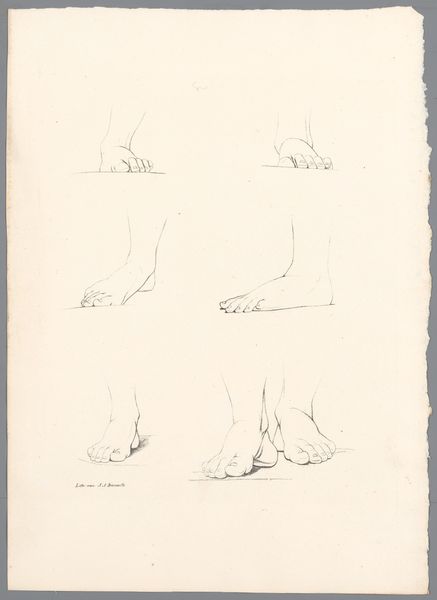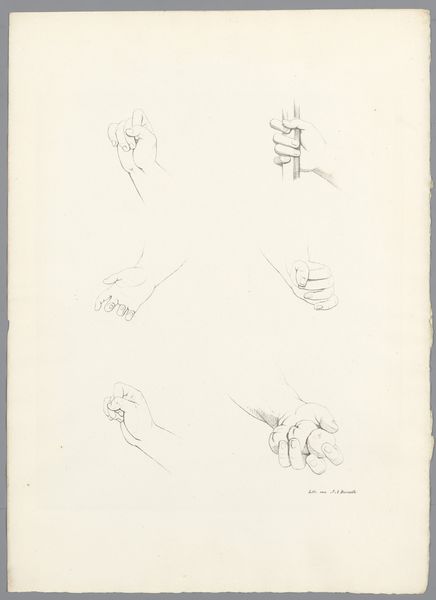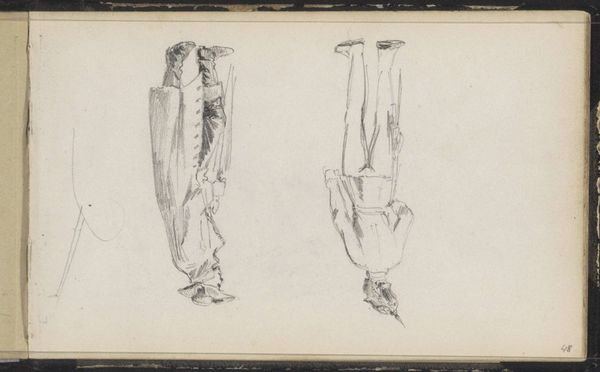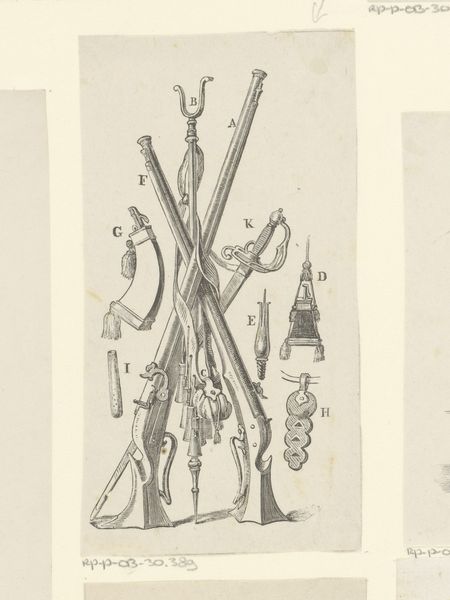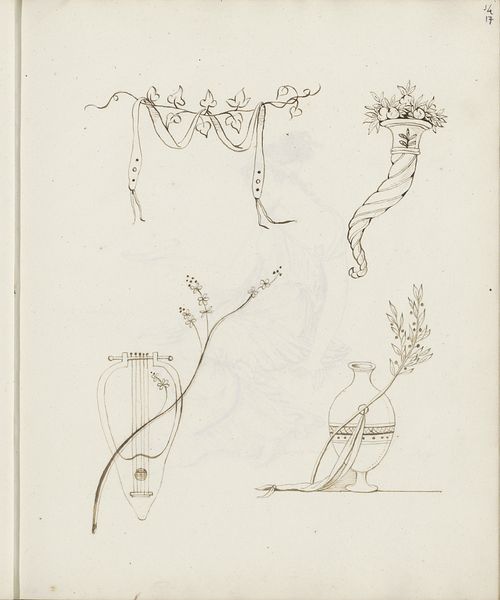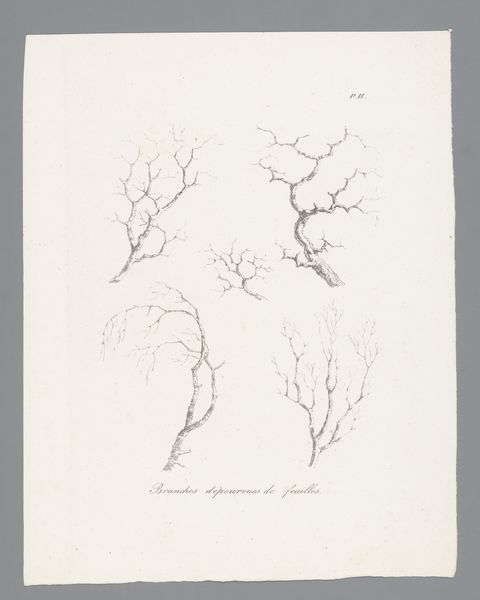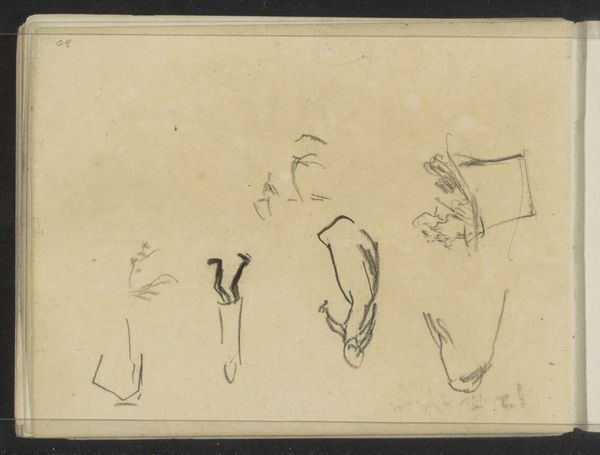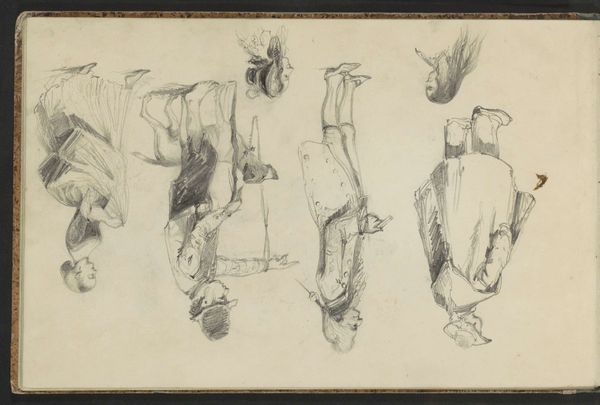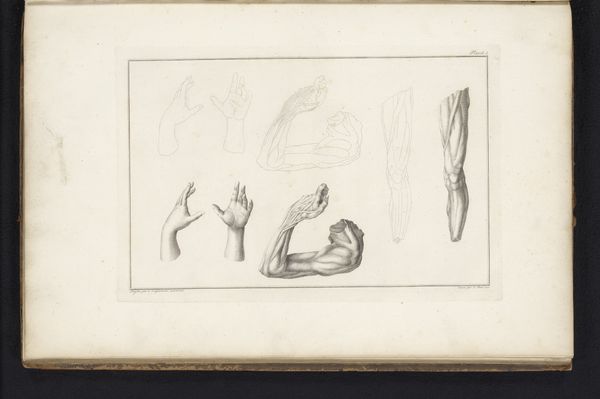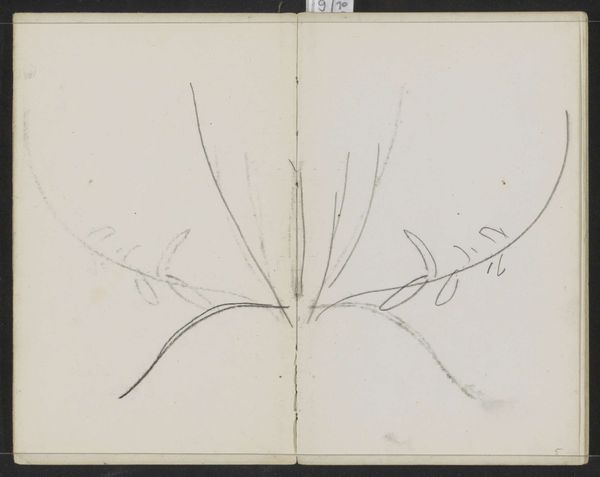
drawing, paper, pencil
#
drawing
#
animal
#
landscape
#
paper
#
pencil
#
horse
#
realism
Dimensions: height 260 mm, width 352 mm
Copyright: Rijks Museum: Open Domain
Curator: Standing here, we are observing "Six Studies of Horse Legs" by Pieter Frederik van Os, created around 1835. It's a drawing on paper, executed in pencil, currently housed here at the Rijksmuseum. Editor: My immediate impression is of fragility. The delicate lines and soft shading give it an ethereal quality, as if the artist is capturing not just the form, but also a sense of movement and energy barely contained. Curator: It's interesting that you perceive it that way, as studies like these served a very specific purpose. In the context of the 19th century, accurate depictions of animals, especially horses, held immense economic and social value. Van Os likely created this sheet to inform his larger compositions and, perhaps more broadly, to assist fellow artists. Horse imagery was deeply interwoven with power and class, often associated with equestrian portraiture of the landed gentry. Editor: Exactly! I can definitely see the echoes of something deeper than mere anatomy. Horse hooves themselves, especially within agricultural societies, symbolize prosperity, fertility, and of course, hard labor. Consider how frequently they appear on coins, equestrian monuments, and coats of arms. Each precise angle becomes imbued with those associations. Curator: That resonates profoundly when thinking about equine exploitation during industrial development and beyond. Were the animals freed by increased mechanization or, conversely, commodified even more relentlessly under capitalism's logic? Details like a horse's stance speak volumes. Editor: It's remarkable how van Os manages to instill personality and perhaps dignity into segments so easily dismissed as merely functional. I read resistance even in the careful detailing. Curator: Do you think that perhaps those perceived hints stem partly from looking at them divorced from the animals to which they belong, thereby liberating these appendages from expected roles, opening possibilities? Editor: Precisely! In a strange way, through breaking apart the animal’s body we are allowed a new appreciation of what makes an animal whole in visual form as well. Curator: Reflecting on the economic and social history of that time deepens the resonance of this simple piece, allowing for rich appreciation. Editor: Indeed, it reminds us to look at the smallest of symbols to understand their part in constructing broader meanings and beliefs.
Comments
No comments
Be the first to comment and join the conversation on the ultimate creative platform.
